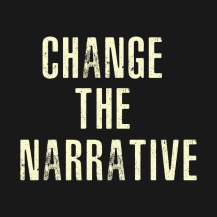
Every year, I am enthralled by the students that pass through my door. Teaching in an urban school district brings with it so many challenges. The socioeconomic differences, ethnicity and racial differences, and this year, it seems more than ever, students heavy laden with trauma, fill our hallways from kindergarten up to fifth grade. It has weighed quite heavy on my heart and spirit this year and affected me in a way I have struggled to deal with, both mentally and emotionally, mainly due to the fact that so much of what I see is out of my control and the pain my students carry is far beyond anything I can do outside of consoling them.
Each year, we are reminded that our population of students is challenged. Language barriers make learning difficult for our students new to the country. Poverty, abuse and violence, moving from place to place and from family member to family member are just some of the challenges they face. But imagine the impact any one of these may have on a child. They don’t understand much of what is going on, but they conform to it because this is the life they know. Understanding our students have basic needs to be met, each year, we find ways to get to know our students a little better in order to connect with them. We understand that relationships matter and impact students’ learning significantly. Still, some students allow you in just a little bit, some allow you in a lot, and others do not allow you to know who they or what they are dealing with at all. It’s no wonder since so many of them have been hurt by the loss of a loved one, transience, abuse, and so many other factors that truly make what we do a challenge. It also makes what we do quite meaningful. Teaching is by no means, for the faint at heart!
I’ve been particularly concerned with the future of many of my students. Many would think that fifth grade students are still very much innocent, naive, and impressionable. They are to a degree, don’t get me wrong. However, the fifth graders I have worked with recently carry much pain and anger and do not have the mental capacity to manage and cope with such emotions. Reaching so many of them has been a struggle, as I stated earlier, but I have committed to trying. My team and I find value in spending time with our students’ one on one in an informal setting (sometimes at lunch, maybe even during specials, or sometimes even outside of school). Especially, when there is a change in behaviors or affect. Being attentive to these changes is vital in helping to shift the narrative of these students’ lives. At least, that is what we hope.
Considering all of this, I am taken aback by a conversation held with one of my students. She had recently become increasingly disruptive and defiant during class. I couldn’t understand what was happening since she’d been doing so well early on in the year. I’d watched her the year before and knew coming into this year that she needed a lot of attention. She knew her behavior last year had been particularly challenging and upsetting too many, so, she personally began the year verbally committing to being a better person and student. At the beginning of the year, you could see how badly she desired something different for her life. She is bright, capable, and progressing academically, but, now, halfway through the year, it was clear, something was getting in the way. My team and I begin to see some old behaviors creeping to the surface. In my class in particular, I began to see a decrease in participation, decrease in effort, an increase in disruptions, and an increase in disrespectful responses towards me and her peers. I’m so taken aback that I decide to have a conversation with her.
I had convinced myself that I could truly hit a nerve since I had taught her older brother several years prior and had a pretty good relationship with the family. When we sat down together, she looked at me and knew instantly what I would be inquiring about. She turned her head quickly so that our eyes would not connect. I asked her to look at me and asked what was going on because I had noticed some changes in her effort and participation. She unknowingly shrugged. I redirected her explaining that shrugs don’t exist in conversations; only words and explanations. While she didn’t share much, I could still sense she was holding back.
The math lesson that day had been particularly challenging and in her effort to make sense of it all, she became frustrated. VERY frustrated! I empathized and explained that I understood her frustration, but even with that, I needed her to trust that I was going to do everything I could to help her, but in return, she had to keep trying. I went on to share, that although things were challenging, math would be an important skill to have in her life no matter what she decided to do. Additionally, math is something she could expect as she advances through high school and college (should she chose to go to college). At that moment, she gave me this look! Something I’d said triggered this questioning look. So, I asked her, “What do you want to be when you grow up? Have you thought about it? Have you thought about college?” She quickly responded that she was not going to college. She was dropping out in the ninth grade like her family members had done. I really wanted to know how, at 10 or 11 years old, she had already made the decision to drop out, so I asked. Quite simply, it was because no one else in her family had gone on to finish, so why should she? This is what her normal looked like. I challenged her. “Your life doesn’t have to go in that direction. You can be the FIRST to make a different decision. What do you think?” She gave a half grin and promised she would consider my words, but I sensed her mind was already made up.
I haven’t been able to stop thinking about this since the conversation occurred months ago. Every day I look at her and see her potential and what she could do with her future. Unfortunately, she seems unwilling to change the narrative of her story. Sometimes I wonder if it’s truly because she doesn’t want to, but then I think it’s because she doesn’t know how to. In my reflection, I wonder…”How do we help her see that she does not have to allow her circumstances to define the person she is or can become? Are we failing her as educators or are we doing all we can for her? How much can we do and where do we access the resources?” These questions leave me feeling helpless, but to her, it seems more hopeless!
It is my strong desire to truly help her “change the narrative”, but where exactly do we as educators even begin? I think it is important for us to remember that there are just some things that are out of our control. We can only impact that which is in our control. We have control over 6 hours of our students’ day, 180 days a year. The rest of that time, these students are home in the environment in which they are being raised. There are influences there that sometimes negate the content and skills we are teaching at school, simply because academic insecurities and inappropriate social skills have been passed down from generation to generation. What I mean is…our families do the best they can with what they have and sometimes what they have just isn’t enough to adequately meet the needs of their children. They raise their children based on what they have been taught themselves, passing along stereotype threats, fixed mindsets, and learned helplessness to generations that follow.
My strong belief is that in order to change the narrative of one’s life, you need to help them change their mindset. There is so much weighing heavy on these students that it seemingly infests the way they think about things; the way they receive and process information. Helping them to see and think about things differently has, in the past, helped our students reject what their environment has taught them to be true.
It won’t happen overnight, believe me. Helping students shift their mindset is a long term process. It requires persistence and consistency. Students will resist and that becomes frustrating. Just know that the resistance is a manifestation of the insecurities and instabilities that are ever present in their daily reality. Before you question one of your student’s behaviors, be it effort level in class or reaction towards peers and adults; check the narrative of their story. Help them edit, revise, shift, change the narrative, and create a new ending to their story. Each and every one of them deserves that opportunity.


